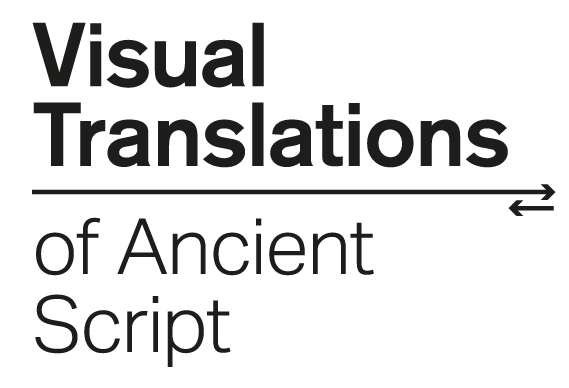Visual translations of ancient script – re-contextualising the Linear A and Linear B scripts through contemporary visual communication methods and media.
The purpose of this practice-led research project was to apply a design methodology approach to the visual re-contextualisation of the Linear B and Linear A scripts, using contemporary visual communication practices and media strategies in order to explore opportunities for creative engagement with archaeological knowledge. The designs were developed with a young target audience in mind, with the intention to provide a stepped communication strategy, which would move them from a point of potential ignorance of the scripts to knowledge of their existence and to the ability to visually identify them. The aim was to introduce knowledge to the young audience incrementally and enable them to playfully connect this to their own lives, so that a foundation for the engagement with deeper knowledge could be built.
The Phaistos Disc is the most famous artifact containing an un-deciphered ‘Minoan’ script. Discovered in 1908 by the archaeologist Luigi Pernier in the ruins of a building next to the palace of Phaistos in south Crete, it dates to 1700-1650 BC. The inscription consists of 45 unique signs in a spiral arrangement. They were stamped on both sides of the disc with seals. Many of the ‘stamped’ signs can also be found on clay tablets inscribed in Linear A and some on clay cups in ink. A reliable decipherment of Linear A remains elusive as to date.
Linear B was first identified by Arthur Evans in the early 20th century and deciphered by the British Architect Michael Ventris in 1952, helped by John Chadwick a scholar of ancient Greek. Linear B dates to about 1425-1250 BC and is an early form of ancient Greek and consist of about 200 signs, of which 87 are syllabic signs and over 100 are logograms. Most of the Linear B writing found so far is administrative in nature and the vast majority has been found scratched into clay tablets of various shapes and sizes. Linear B writing is also represented by transport and storage vases with short inscriptions painted on clay before firing.
There is a natural affinity between contemporary graphic design and ancient script because they both deal with the visual presentation of meaning. Over the last 70, years well known Graphic Designers such as Adrian Frutiger, Otto Neurath and Gerd Arntz have been interested in ancient script and explored the meaning of archetypes and their link to logographics.
The project included Graphic Design academics and a team of design researchers, with Dr. Georgia Flouda a Curator at the Heraklion Archaeological Museum acting as the specialist advisor, as well as being involved in the intellectual conceptions.

